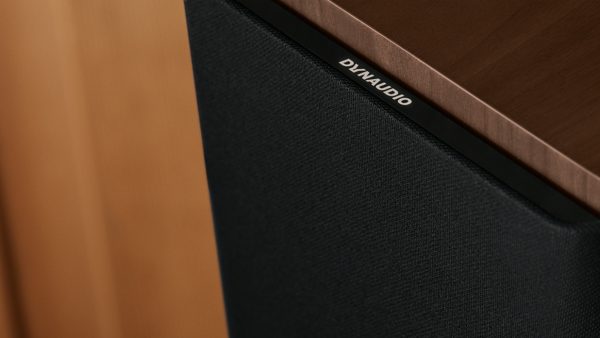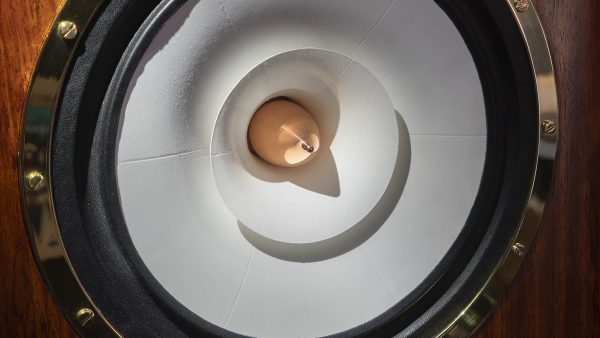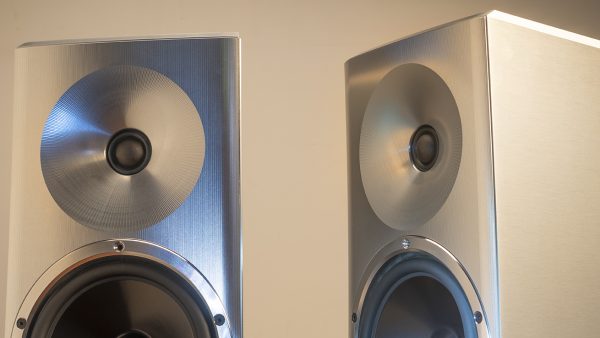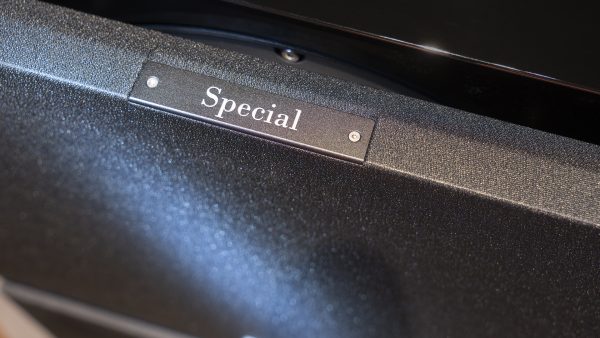A 40-year dream, realized
Listening to Thomas Dolby’s “I Scare Myself” has special meaning with the Clarisys Auditorium Plus speakers because that’s the first track I heard on the Apogee Full Range speakers years ago at Quintessence Audio. There are experiences you never forget – and that’s one of my favorite ones. After a few pairs of Acoustats, Magnepans and some original Quad 57s, here was a panel speaker that was transparent like nothing else, yet had significant dynamic ability. I think they were about $12k a pair in 1984-ish and needed a pair of Krell monoblocks to deliver the necessary current to push them. But it was the most musically revealing system I’d ever heard, remaining so on many levels for years to come. And I only had a KSA-100 at the time.
$189,000 a pair. You read that right. I know that’s going to put a lot of you out. But as the preacher said on the Texas radio station when I was lost somewhere in the middle of the state – “now I’m gonna give you some good news.”
You don’t have to spend 190 large to get what the second from the top (Yeah, they make an even bigger pair) Clarisys speakers have to offer. As with all panels, the Clarisys speakers should match your total room volume to deliver their best. Every panel I’ve ever owned (and I’ve had them all) works the same way. Ed. Note, due to current tariffs in place, these speakers have gone up from their original price of $149,000/pair when they arrived. Highly biased personal opinion these are still an incredible value compared to any of the $850k speakers out there. Just sayin’.
The entry point for this glorious sound is $20k. Still not small change, but quite a bit less than a pair of Magnepan 30.7x’s. MartinLogan doesn’t even make a full-range electrostatic speaker anymore, and their $150k pair of Neoliths lack the sonic purity that comes from a hybrid speaker. (But to be fair, they really do rock)
When my listening room was only 15 x 24 feet, I could not have adequately experienced the Auditorium Plus in that room. Clarisys importer Mike Boviard and I were discussing a smaller pair for review. Both of our lives got insanely busy, and I ended up with the 24 x 36-foot room I have now. This led to the opportunity to review these speakers, which would not have been possible before. I will also travel to experience the smaller models in the next 12-18 months to report on those.
Much as I would love to take the easy way out and tell you these are the world’s best speakers, that would be a disservice to everyone. The Auditorium Plus is, however, my favorite pair of speakers in the world—and I’ve had the opportunity to audition quite a few over the years. I’ll go on record saying I would take these over a pair of the top offerings from any cone speaker manufacturer, but there’s my bias—I love panels.
I also prefer these to the Alsyvox speakers, but if you want a big pair of panels, you should also audition them. As one person would much rather have a BMW M4 than an Audi RS4, I feel the same about this comparison. I could live with either, but to these ears, the Alsyvox speakers come across as slightly warmer, having a little bit of a mid-bass bump by comparison and a slightly softer top end than the Clarysis, and you can drive the Alsyvox with an SET.
I like the Auditoriums better – yet it’s been about 50/50 amongst fellow panel lovers. Think about how one audio enthusiast loves MartinLogans and hates Quads. It’s kinda like that. I’ll take the BMW M car as well. There’s just something about the microsecond gap that an all-wheel drive car like the Audi Quattro, BMW’s XDrive, or a Porsche Carrera 4 while the drive spools up that always keeps me hanging. The Auditoriums are just that much more immediate.
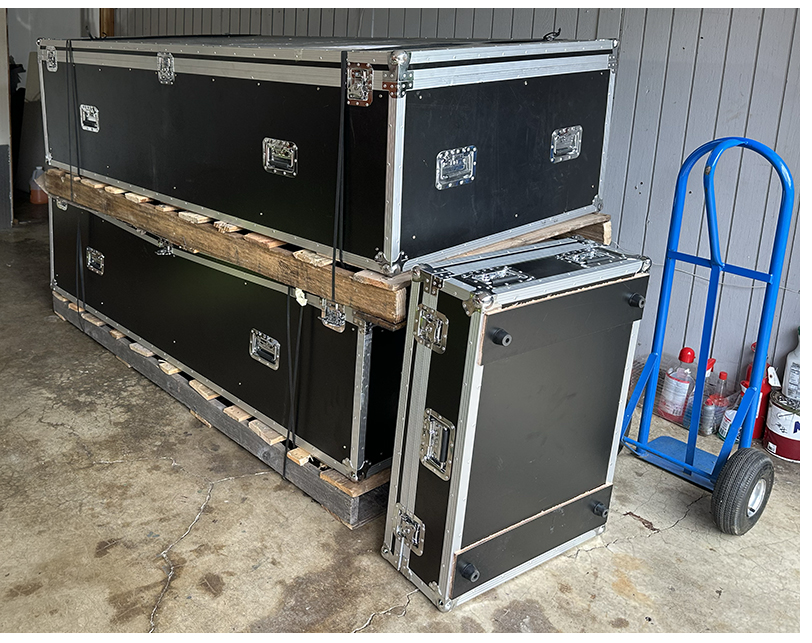
A not-so-quick setup
The speakers arrive in enormous road cases that weigh over 700 pounds each. In our case, they arrived stacked on top of each other, so it took a while to locate a local forklift to lift them both to the garage floor level. After that, the friendly dudes at Lugg.com were able to lift them back out to the studio and up on their ends near their final resting place so that my neighbor Bob and I could extract them from said crates.
Crossovers are outboard in separate enclosures (You have to pay extra for this with Alsyvox, just saying…) and are quickly connected once the speakers are in place. As I’ve had numerous panels here, starting from where my MartinLogan CLXs used to reside was easy. Because of the larger room volume now, the Auditoriums ended up being almost where the CLXs were in terms of distance apart – about 8 ½ feet tweeter to tweeter. Where the MLs settle in about 39 inches from the rear wall, the Auditoriums find the best tonal balance almost another foot out in the room. This is partly because the Auditoriums go much deeper than the MLs were capable.
The final listening position ended up being just under 11 feet back from the imaginary centerline of the speakers. For now, the Pass Monos have their amplifier chassis stacked on top of the power supplies, but this summer, in the interest of achieving the absolute maximum stereo image, I will put all four boxes down at floor height.
Considering these speakers are just a tick over 600 pounds each, they were surprisingly easy to set up. A set of 9 ½” oval pads (from Amazon, of course!) under each corner combined with the ropes enclosed with the speakers makes it easy to perform small movements. This was extremely helpful in getting the toe-in just right – these speakers require more than past panels. Too little and the stereo image breaks down into sound from two separate speakers; too much and the image loses specificity. Sonic perfection drops into place readily enough that you won’t second guess yourself when it’s right. I’ll stick my neck out and assume the other Clarisys speakers perform similarly in this respect.
The only thing to keep track of is ensuring all those binding posts have the correct polarity so that one or more of the woofer, mid, and tweeter panels don’t play out of phase. As these speakers had been to a few hi-fi shows in the past year, the tweeter and midrange panels needed a slight bit of tensioning, which Clarisys founder Florian Wiegand talked me through handily.
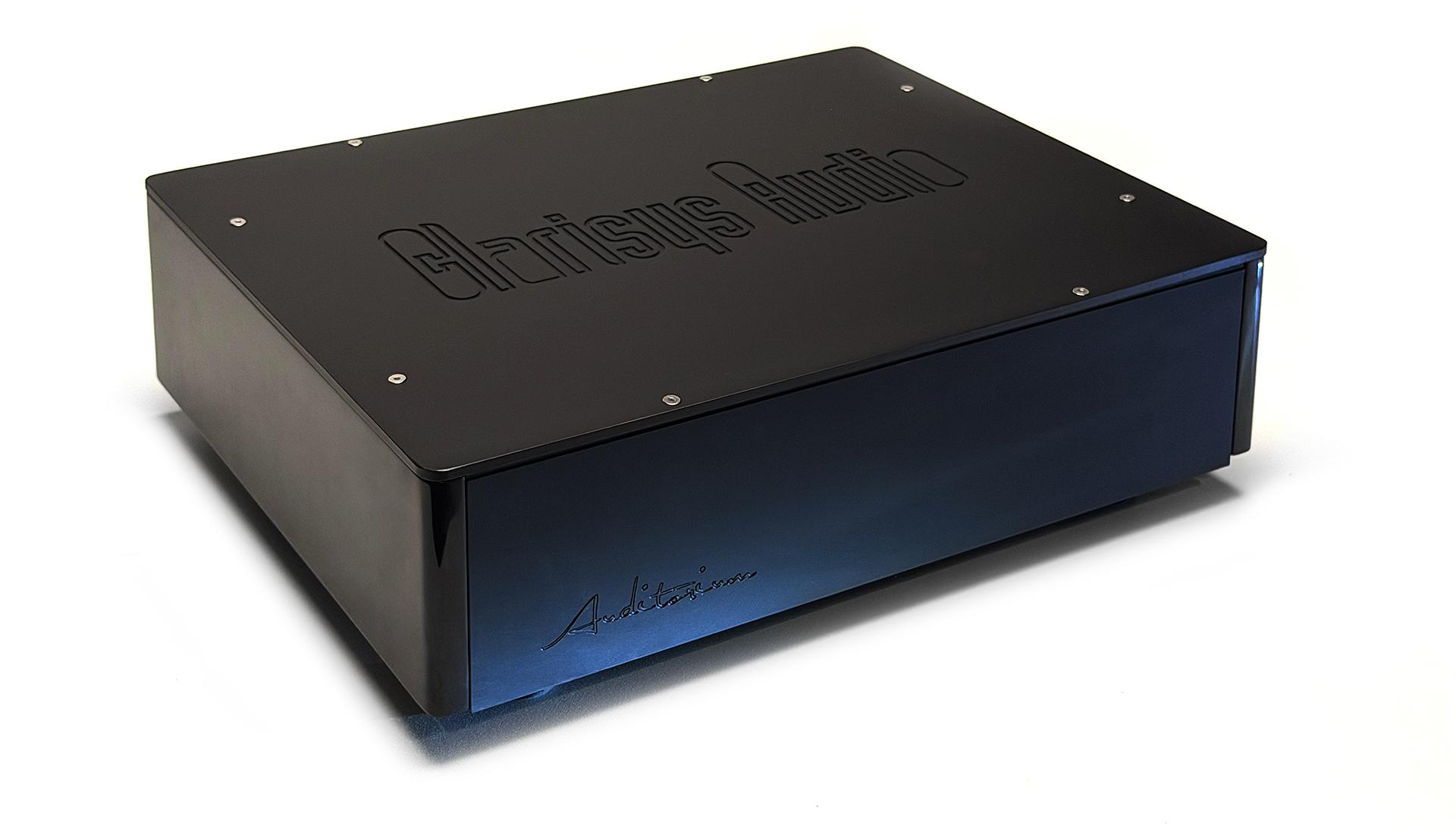
Thoughts on amplification
That point taken, the Auditoriums are not like the Apogees from my past. While you can’t drive them with a 9-watt per channel SET (and I did try just for giggles), you can drive them with a 75-watt per channel tube amplifier—in this case, the BAT VK 90.
Taking this a step further, inserting the PrimaLuna EVO 400 monos with KT150 tubes is a very pleasant way to enjoy these speakers, and the warmth these amplifiers provide actually split the difference in sonic presentation between the Alsyvox demo I heard.
Combining their neutral balance with how easy they are to drive, making the Auditoriums the anchor of your system allows for a wide range of system personalities. Change one cable or roll a few tubes, and you hear it clearly. It might take you on a wild ride if you don’t know exactly what sound you’re going for because you’ll hear every minute change made to the system.
In the same way that the various models of Clarisys speakers produce a bigger soundfield as you go up the model range, the Auditorium scales with amplifier power. Listening began with the Pass Labs XA60.8 monoblocks, which produce 60 watts per channel in class-A mode but have tremendous power reserves. Bass control is excellent, with good extension, and the Auditoriums reveal the low-level detail prowess that the small Pass monos are well known for.
Moving up to the Pass X600.8 amplifiers, just in for review, delivers a completely different flavor. The big class-AB Pass monos allow more bass extension and drive and more sheer dynamic push than I’ve ever heard a pure panel speaker deliver, but this setup is slightly flatter in tonal saturation. It is slightly more on the “just the facts” side. Swapping the Pass XS Pre for the BAT VK-80 tube preamplifier splits the difference somewhat.
As discussed above, the PrimaLunas with KT 150 tubes are warmer, yet the 200 watts per channel they deliver have more than enough dynamic push for these speakers. However, knowing how these speakers respond to more power (with control), it would be intriguing to hear them with larger and more powerful tube amplifiers in the future.
Finally, near the end of this review, the mighty Pass XS 300 four-box monoblocks have made their way back here as a reference, and this turns out to be the Goldilocks combination—delivering about 95% of the delicacy and inner detail that tubes provide, with all the benefits of a large solid-state amplifier. Ed. Note 2: The REL Carbon Special six pack was not here during the initial review, but this is the tidiest my room has been in a long time. so….
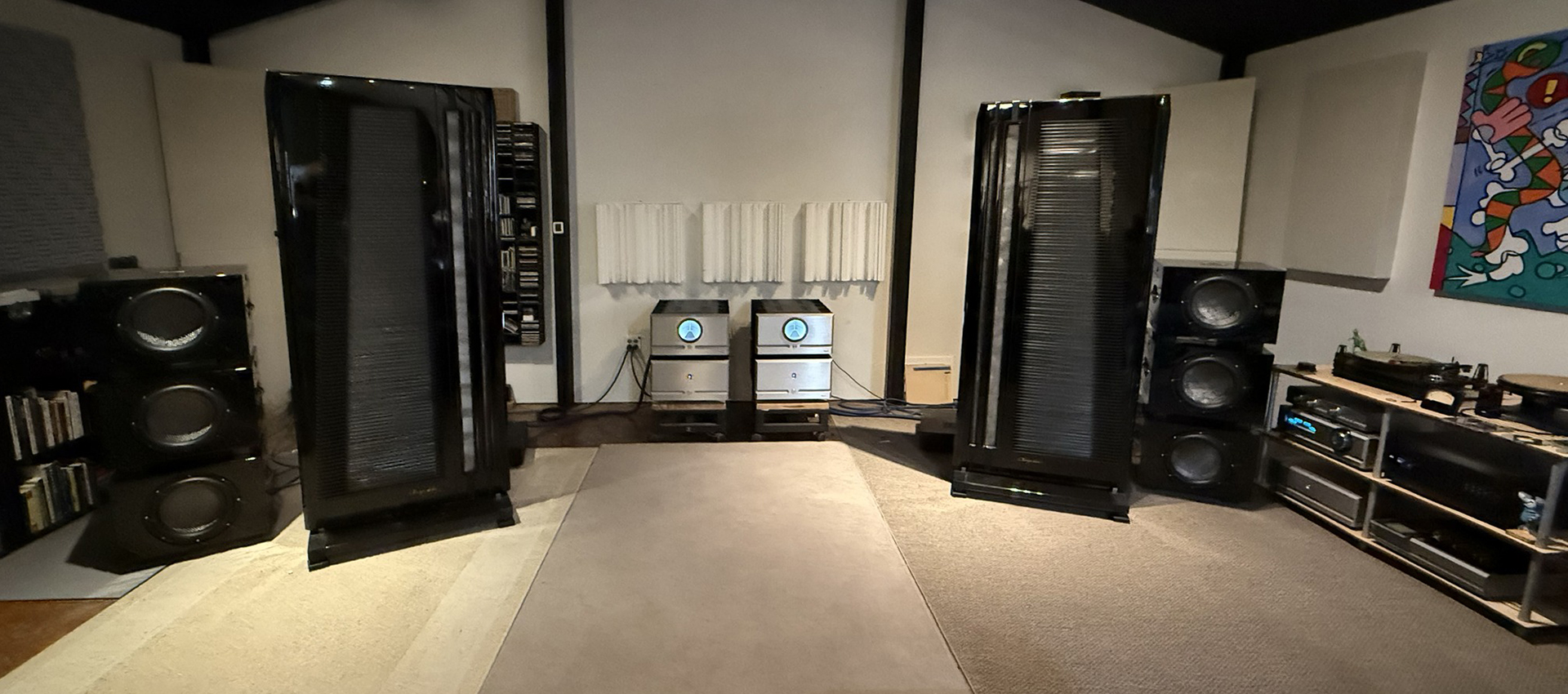
As somewhat of a side step to these choices, the Octave V110SE (with Super Black Box) and the CH Precision i1 integrated amplifiers both deliver enough power and resolution to deliver a highly satisfying experience. I could happily live with a high-quality integrated like this and experience the speakers while waiting to upgrade the amplification. The bottom line is that these speakers will go from great to beyond extraordinary. It just depends on how good your amplification chain is.
More Listening
Fortunately, with a pair of vintage Acoustats, vintage Quads, a pair of MartinLogans, and a pair of Magnepans all here for cursory comparisons – the strengths of the Clarisys speakers are easy to identify and pinpoint. While the others I have for comparison are not a match in the price department, their basic transducers all have the same sonic footprint. You will never mistake a pair of Magnepans for the Quads or these.
Where panel speakers usually fall short with low-frequency reproduction, these speakers do not. Their nearly seven-foot tall bass panel goes a long way in mimicking what a REL array does in the sense that bass now has a height and a presence instead of simply being weighty. That said, a six-pack of REL 31s will probably be here before the end of the year to see if we can take this all even further – it’s now become somewhat of a quest. More on that this summer.
The height and sheer panel size also significantly enhance the immersive presentation that the Clarisys speakers deliver. While the 40-plus-year-old Acoustats are no match in terms of resolving ultra-fine detail, their towering size offers a pleasing and very three-dimensional experience that can not be matched by smaller speakers. My vintage pair of Magnepan Tympani 1-Ds were also excellent at this.
Even the master of inner detail and midrange magic, the Quad 57 takes a back seat to the Auditorium Plus. Benchmark though they are, the Quads still sound veiled by comparison, and those of you who know this speaker well know that they are fragile and impossible to drive to realistic levels with full-range musical selections. Considering a freshly refurbed pair of Quads can still be had for less than $10k/pair, they do offer an intriguing experience.
Yet, with each of the other panels at my disposal, there’s always a sigh of limitation that accompanies them, and perhaps this is why so many forgo what a great panel has to offer for the sheer dynamics of a box speaker. I get it.
Not to mention the size limitations that come with any panel – they are not always the most co-habitant friendly speaker going. And the Auditorium Plus is a prominent speaker indeed. They may even be floor-prohibitive at just a tick over 600 pounds each. Fortunately, my studio has a 13-inch thick concrete slab, so there are no issues here.
These speakers excel at timbral accuracy and an overall ease, combined with scalability, makes for a large part of the Auditorium Plus’ ability to disappear in the room and just render music. By contrast, Magnepans tend more to make everything sound big, and the Quads have a somewhat smaller sound perspective by comparison – no doubt this has a lot to do with their limited LF ability.
The highs are silky smooth, without being etched or rolled off – again, natural is the world. Percussion instruments sound correct and decay as they do in real life. The more acoustic and unamplified vocal music you’ve heard over the years, the easier this aspect of their performance will appeal to you.
Another aspect of these speakers contributing to the sheer realism they present is their transient response, which is so much faster than that of a cone because the ribbon driver has so much less mass to accelerate and decelerate. How quickly a driver can stop without overhang is just as important as the initial push. Revisiting an old favorite test track – AC/DC’s “Rock and Roll Ain’t Noise Pollution” features a solitary snare drum beat as the lead guitar folds in at the beginning of the track. The only time I’ve ever heard the drum beat and the release of the drum head with this level of texture has been with the Focal Grande Utopia EM, powered by a full Boulder system. (At the Boulder factory, in a slightly larger room)
To be fair, the big, million-dollar Boulder system has slightly more dynamic push than the Clarisys with my Pass gear, but not much. And what the big ribbons bring to the table in nuance outweighs slightly more ultimate dynamics. Again, this is highly personal.
What’s often forgotten about dynamics is the opposite end of the scale. These speakers do such an incredible job with the most minute details in music; they open up a new perspective. The extra panel area that these speakers have (much like the MartinLogan CLX) give them the ability to be engaging at relatively low volume levels as well. However, there is a point, not terribly loud, where the Auditoriums really come alive and envelop you in the soundfield generated.
This heavenly part of the presentation keeps me on the couch for hours on end.
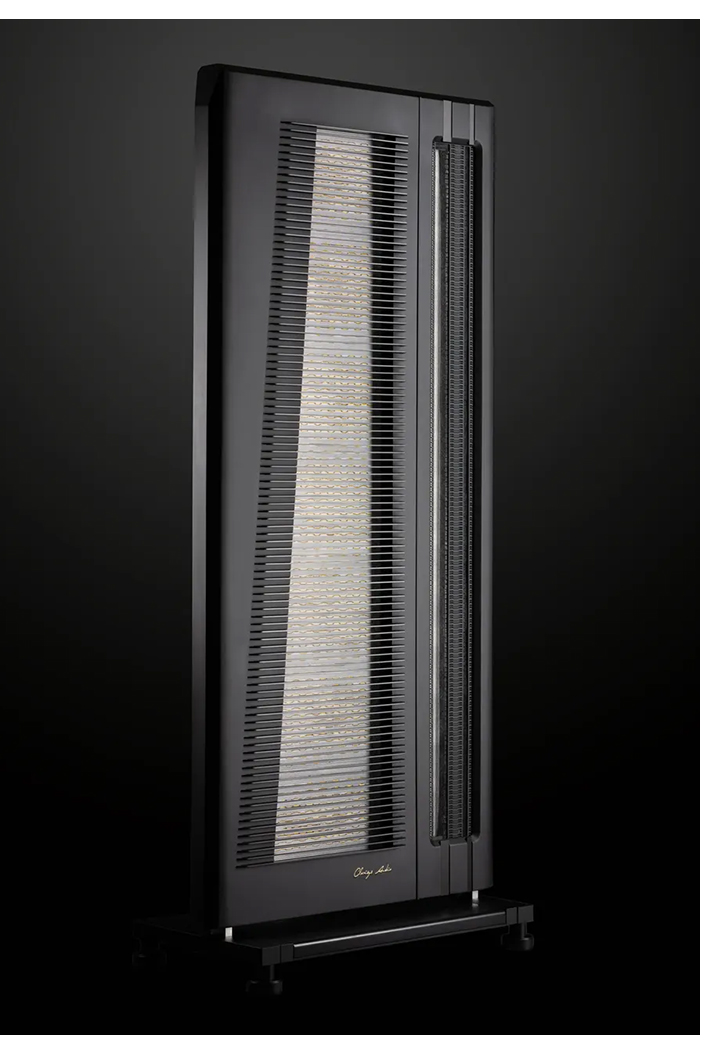
Nothing but love
I suspect that after hearing the Alsyvox—and let’s face it, if you have $190k to buy speakers with—you can (and should) make the time to audition both, but you will really prefer one of the two. I’m keeping the Clarisys. They are the most engaging loudspeakers I have ever experienced in a near 50-year exploration. I hope that means something to you.
Though I’ve told every one of my wives and girlfriends over the years that “this is the last pair of speakers I’m ever buying,” unless something radically changes in my life or health, this is the last pair of main reference speakers I’m ever buying.
I have never enjoyed any speaker at any price as much as the Clarisys Auditorium Plus. If you’ve been reading Tone for a long time, you know I’ve only said this a couple of times in almost 21 years. I’m not a speaker of the month guy by any stretch of the imagination. (The other big speaker loves have been the GamuT S9, the MartinLogan CLX, and the Sonus faber Stradiveri’s with a six-pack of REL no.25 subwoofers.)
Either way, even if you might be in the market within the price range of the three smaller Clarisys speakers, I highly suggest you audition one of them as part of your quest. They make a panel person out of you, or they may redefine what you can expect from this genre. After 40 years, they certainly have for me.
Yet nothing I have said here will prepare you for what these speakers have to offer. You’ll only need about 60 seconds of your favorite track. Even if the Clarysis Auditorium Plus does not make sense for your room, system, or budget, I highly suggest having the experience.
You’d take a GT3RS for a spin if someone flipped you the keys, wouldn’t you? – Jeff Dorgay
$189,000/pair.
clarisysaudioglobal.com
Peripherals
Digital Source dCS Vivaldi ONE
Analog Source SME 20 w/4.5i arm and Hana Umami Red cart
Phono Pre Pass Labs XP-27
Preamplifier Pass Labs XS Pre
Amplifiers Pass Labs XS 300 monoblocks
Cable Cardas Clear, and Clear Beyond.


